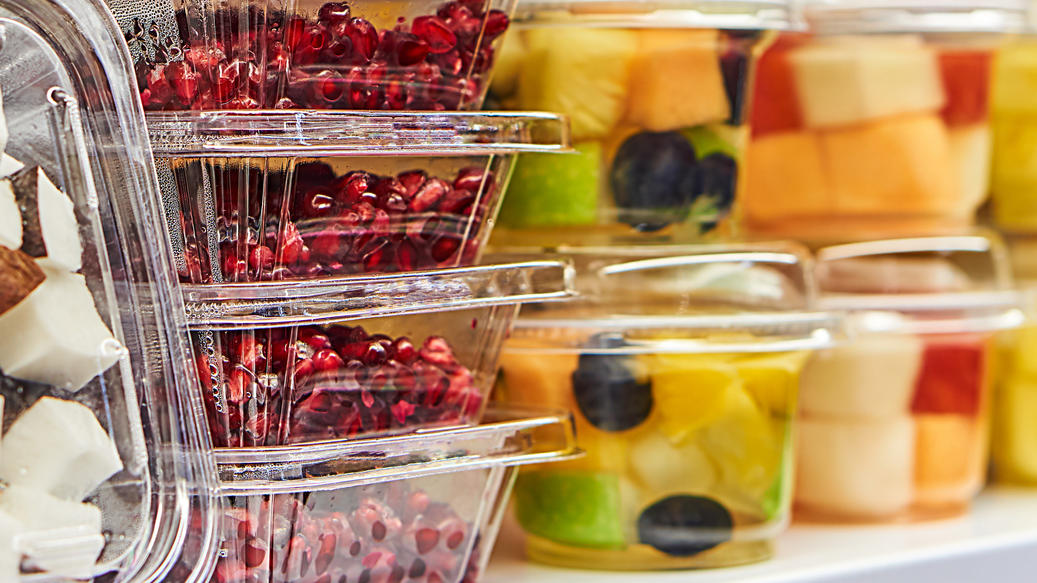We love fruit salad. So do bacteria and mold – especially the pre-cut kind.
A small snack in between – in the morning before work or while waiting for the train. Ready-cut fruit as a small meal is popular, it’s quick, and you don’t have to use your own hands or knives to boost energy. Supermarket refrigerated counters are filled with little cups of sliced melons, apples, or pineapples. But the vitamin bombs have a pitfall: For, on the one hand, the plastic packaging leaves litter, as the fruit is wrapped in reams of plastic to protect it from contact with the air. On the other hand, the “fruits to go” can also be harmful to health. A case in the USA has shown this: 60 people contracted salmonella from melons – 200 others fell ill from lettuce packed in plastic because it was contaminated with Ehec pathogens.
But how do the bacteria and germs get to the seemingly fresh food? The problem is that the fruit is already cut. This allows nutrient-rich liquid to escape through the cuts, providing the perfect home for germs, bacteria, and mold. If the cold chain has been broken or the ready-to-eat fruit has been sitting for a very long time, more germs will form, and the health risk will increase.
It is also a misconception that the vitamin boost comes directly from the ready-to-eat fruit. This is because the fruit flesh is no longer protected when it is cut open. This makes it very easy for oxygen and light to destroy the vitamins – especially vitamin C – in the flesh.
- source: quarks.de/picture: rtl.de
This post has already been read 1471 times!



